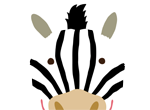Tethered spinal cord
Find a neurosurgeonLearning that your child has a tethered spinal cord is troubling, but the condition is highly treatable.
At Advocate Children’s Hospital, our board-certified neurosurgeons are skilled in minimally invasive procedures to treat tethered spinal cords. Our physical rehabilitation specialists also help your child get back to an active life.
What is a tethered spinal cord?
Tethered spinal cord is a condition in which the spinal cord becomes attached to tissue inside the spinal canal, usually at the bottom. As a child grows, the unusual connection causes the spinal cord to stretch, causing pain, nerve damage and other problems.
What causes tethered spinal cord?
Some children are born with a tethered spinal cord, while others develop the condition later. Possible causes include congenital conditions present at birth such as spina bifida. Spinal tumors or scar tissue after an injury or surgery can also cause tethered spinal cord.
Tethered spinal cord symptoms
With congenital tethered spinal cord, you may notice some signs at birth. Your newborn may have discolored skin, a fatty tumor, a dimple or a patch of hair on their back.
Other signs and symptoms of a tethered spinal cord appear later, as the child grows or after a spine injury or surgery:
- Abnormal gait (walking pattern)
- Back pain that gets worse with activity
- Bowel and bladder problems
- Spine curvature disorders such as scoliosis, kyphosis and lordosis
- Leg pain, numbness or tingling
- Structural problems in the feet, such as hammertoe
- Weakness in the legs or feet
Tethered spinal cord diagnosis
When you bring your child to us, a specialist from our neurology program asks about your child’s potential tethered spinal cord symptoms and medical history. The doctor then does a physical exam. Read about what to expect during your visit.
Other imaging and tests we use to diagnose tethered spinal cord include:
- Magnetic resonance imaging (MRI): These scans produce detailed images of the spine and surrounding areas, using powerful magnets and radio waves. We use MRI to view the spinal cord’s location and check for any problems. We offer fast MRI, with technology that corrects for movement so your child doesn’t need anesthesia.
- Computed tomography (CT): A CT scan takes X-rays from multiple angles to create 3D images of the brain. CT can show the spinal cord’s location and other details.
- Myleogram: We take X-rays or CT scans of the spinal canal after injecting a contrast material into the spinal column. The contrast highlights pressure on the spinal cord or nerves.
Tethered spinal cord treatment
Surgery is the main treatment for tethered spinal cords. We free the spinal cord, relieving pain and other symptoms. Releasing the tethered spinal cord also prevents nerve damage and spinal cord stretching. Our neurologists work with the skilled pediatric team in our neurosurgery program to coordinate your child’s care.
During the operation, the surgeon removes part of a vertebra (one of the bones that make up the spine) to access the spinal cord. Using a microscope, the surgeon gently cuts away the tissue holding the spinal cord in place, then replaces the bone.
After surgery, we may refer your child to our rehabilitation and development team for physical and occupational therapy. Skilled therapists guide your child through exercises to improve strength, flexibility and other abilities to help them return to an active life.
Get care
Kid-focused. Close to home. We’re here for your child in person and online.





